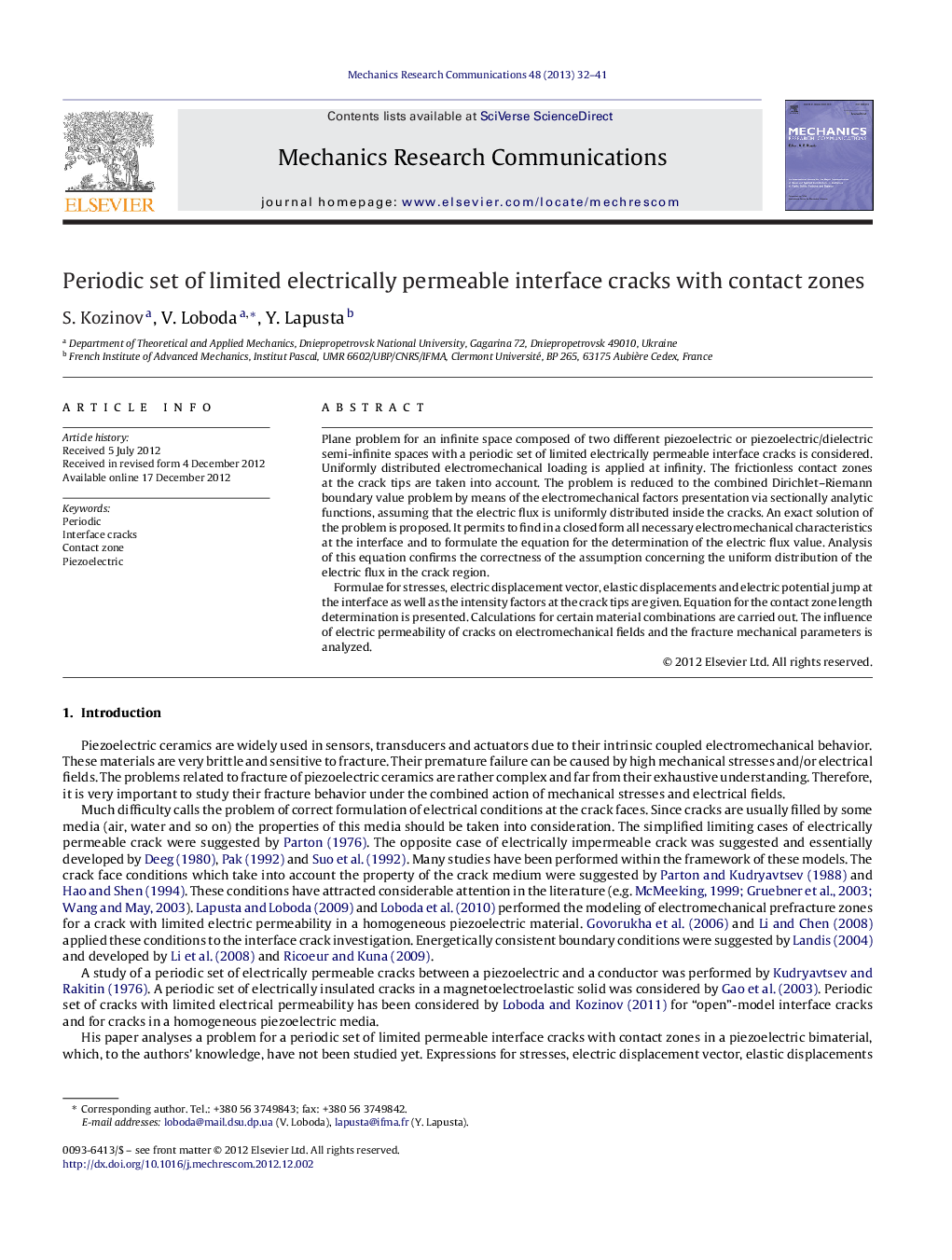| کد مقاله | کد نشریه | سال انتشار | مقاله انگلیسی | نسخه تمام متن |
|---|---|---|---|---|
| 799142 | 1467688 | 2013 | 10 صفحه PDF | دانلود رایگان |

Plane problem for an infinite space composed of two different piezoelectric or piezoelectric/dielectric semi-infinite spaces with a periodic set of limited electrically permeable interface cracks is considered. Uniformly distributed electromechanical loading is applied at infinity. The frictionless contact zones at the crack tips are taken into account. The problem is reduced to the combined Dirichlet–Riemann boundary value problem by means of the electromechanical factors presentation via sectionally analytic functions, assuming that the electric flux is uniformly distributed inside the cracks. An exact solution of the problem is proposed. It permits to find in a closed form all necessary electromechanical characteristics at the interface and to formulate the equation for the determination of the electric flux value. Analysis of this equation confirms the correctness of the assumption concerning the uniform distribution of the electric flux in the crack region.Formulae for stresses, electric displacement vector, elastic displacements and electric potential jump at the interface as well as the intensity factors at the crack tips are given. Equation for the contact zone length determination is presented. Calculations for certain material combinations are carried out. The influence of electric permeability of cracks on electromechanical fields and the fracture mechanical parameters is analyzed.
► A periodic set of limited electrically permeable interface cracks is considered.
► The frictionless contact zones at the crack tips are taken into account.
► The problem is reduced to the combined Dirichlet–Riemann problem which is solved exactly.
► Equations for the determination of the electric flux through the cracks and for the contact zone length are obtained.
► The influence of electric permeability of cracks on fracture mechanical parameters is demonstrated.
Journal: Mechanics Research Communications - Volume 48, March 2013, Pages 32–41